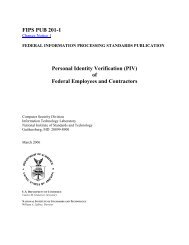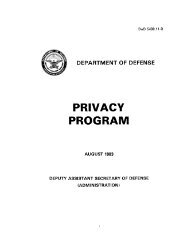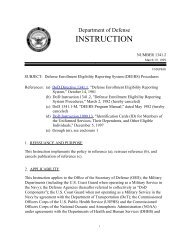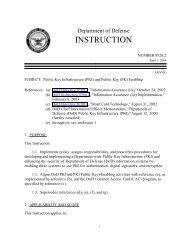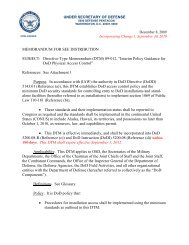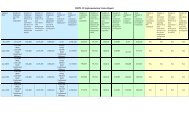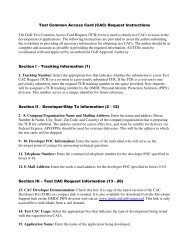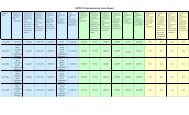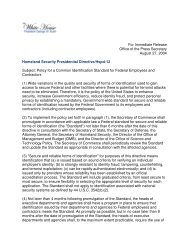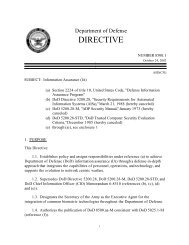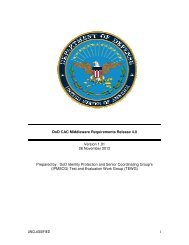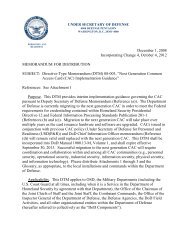DoD Instruction 8500.2 - Common Access Card (CAC)
DoD Instruction 8500.2 - Common Access Card (CAC)
DoD Instruction 8500.2 - Common Access Card (CAC)
Create successful ePaper yourself
Turn your PDF publications into a flip-book with our unique Google optimized e-Paper software.
DODI <strong>8500.2</strong>, February 6, 2003<br />
E2. ENCLOSURE 2<br />
DEFINITIONS<br />
E2.1.1. Application. Software program that performs a specific function directly<br />
for a user and can be executed without access to system control, monitoring, or<br />
administrative privileges. Examples include office automation, electronic mail, web<br />
services, and major functional or mission software programs (<strong>DoD</strong> Directive 8500.1,<br />
reference (a)).<br />
E2.1.2. Authorized User. Any appropriately cleared individual with a requirement<br />
to access a <strong>DoD</strong> information system in order to perform or assist in a lawful and<br />
authorized governmental function (reference (a)).<br />
E2.1.3. <strong>Common</strong> Criteria. The International <strong>Common</strong> Criteria for Information<br />
Technology Security Evaluation (CC) defines general concepts and principles of<br />
information technology (IT) security evaluation and presents a general model of<br />
evaluation. It presents constructs for expressing IT security objectives, for selecting<br />
and defining IT security requirements, and for writing high-level specifications for<br />
products and systems (reference (j)).<br />
E2.1.4. Community Risk. Probability that a particular vulnerability will be<br />
exploited within an interacting population and adversely impact some members of that<br />
population (reference (a)).<br />
E2.1.5. Computer Network. The constituent element of an enclave responsible<br />
for connecting computing environments by providing short-haul data transport<br />
capabilities, such as local or campus area networks, or long-haul data transport<br />
capabilities, such as operational, metropolitan or wide area and backbone networks<br />
(reference (a)).<br />
E2.1.6. Computing Environment. A computer workstation or server (host) and its<br />
operating system, peripherals, and applications (reference (a)).<br />
E2.1.7. Computing Facility. A room, building, or section of a building that houses<br />
key IT assets, such as application servers, network management servers, domain name<br />
servers, switches, firewalls, routers, and intrusion detection systems. Computing<br />
facilities have physical and environmental security requirements identified in IA<br />
controls that focus on both the availability and confidentiality of the information<br />
processed. (See also "facility.")<br />
15 ENCLOSURE 2



